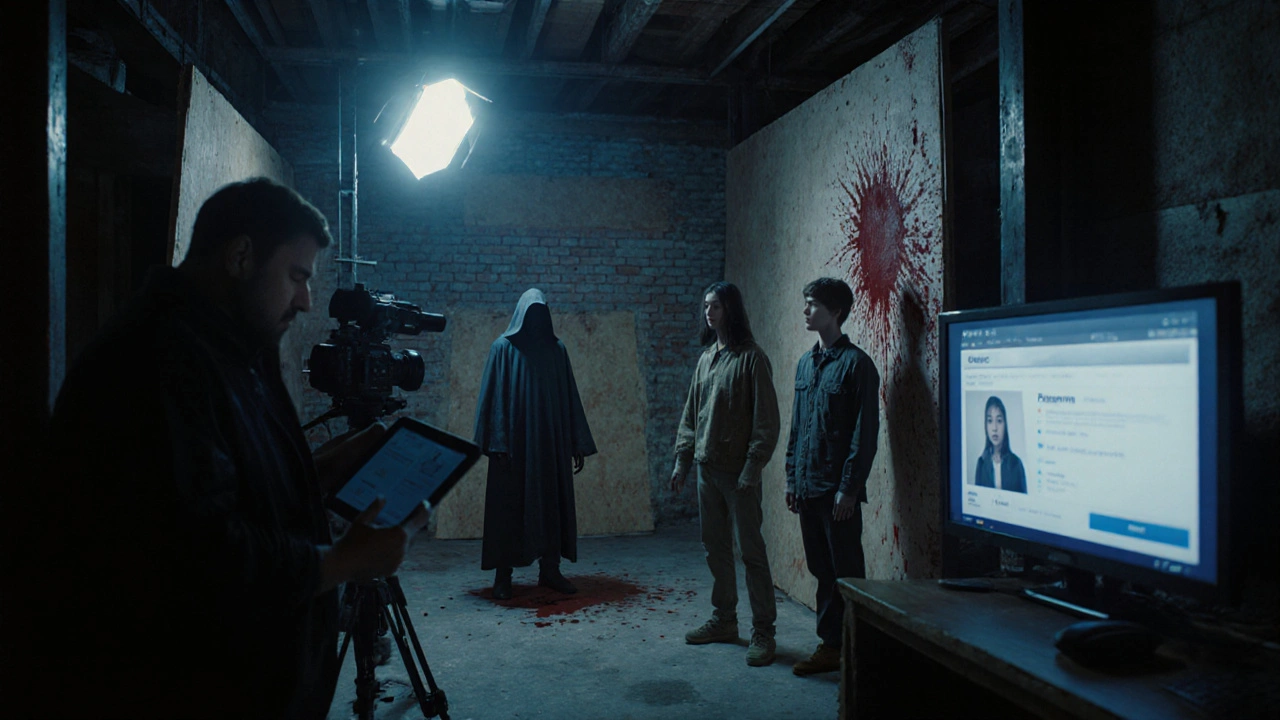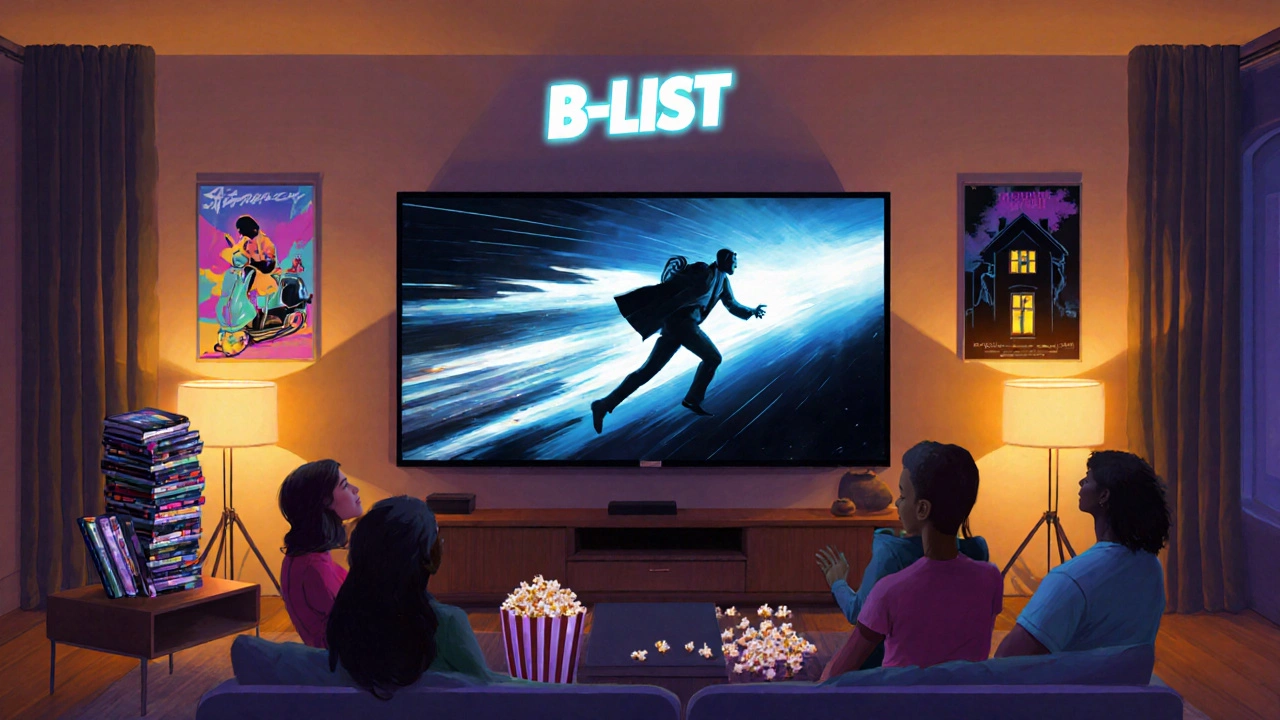Ever heard the term B list movie and wondered if it’s just a marketing buzzword or a real category? You’re not alone. Filmmakers, critics, and binge‑watchers all use it, but the exact meaning can feel fuzzy. This guide cuts through the haze, explains what makes a B‑list film tick, shows how it stacks up against A‑list blockbusters and indie gems, and gives you a ready‑to‑use checklist for spotting one next time you scroll through a streaming catalogue.
Quick Takeaways
- “B‑list” describes movies with modest budgets, limited star power, and narrower marketing reach.
- These films often rely on genre formulas (action, horror, comedy) to attract audiences.
- Box‑office returns are usually measured against budget, not blockbuster expectations.
- Streaming platforms and cable channels are the primary homes for many B‑list titles.
- While not always critically acclaimed, B‑list movies can become cult classics and launch careers.
Defining the B‑List Movie
DB‑list movie is a film that sits below the high‑budget, star‑driven tier of mainstream cinema, typically produced with limited financial resources, lesser‑known leads, and a focused, genre‑centric marketing strategy. The label originated in Hollywood’s studio era, where talent was literally listed as A‑ or B‑players on studio payrolls. Today it’s a shorthand for any feature that doesn’t command the marquee space of an A‑list movie but still aims for commercial release.
Core Traits of a B‑List Film
- Budget modesty: Production costs usually range from $1million to $20million, far below the $150million+ typical of blockbusters.
- Star power: Leads are often emerging actors, TV stars, or genre veterans rather than worldwide name‑recognition.
- Genre focus: Horror, action‑adventure, and comedy dominate because they deliver high returns on low investment.
- Marketing scope: Campaigns rely on trailers, social media hype, and niche press rather than prime‑time TV spots.
- Distribution channels: Wide theatrical releases are rare; streaming platforms, on‑demand services, and cable networks are the main venues.
How B‑List Differs from A‑List and Indie Films
| Aspect | A‑List Movie | B‑List Movie | Indie Film |
|---|---|---|---|
| Typical Budget | $150M+ | $1M-$20M | Under $1M |
| Lead Actors | Global stars | TV stars / genre regulars | Emerging talent |
| Marketing Spend | $50M+ | $1M-$5M | Minimal, festival‑focused |
| Primary Release | Wide theatrical (1000+ screens) | Limited theatrical + streaming | Film festivals → niche streaming |
| Box Office Goal | Hundreds of millions | Break even or modest profit | Critical acclaim & festival awards |
| Typical Review Source | Rotten Tomatoes, Metacritic | Rotten Tomatoes & genre blogs | IndieWire, Sundance reports |

Real‑World B‑List Examples
Seeing is believing. Below are six films that perfectly illustrate the B‑list formula. Notice the recurring themes: tight budgets, recognizable but not megastar leads, and a strong genre hook.
- Turbo Kid (2015) - A retro‑sci‑fi adventure made for under $1M, starring a teen TV actor, and now a cult favorite on streaming.
- The Purge: Anarchy (2014) - Part of a franchise that leverages a low‑budget horror premise to earn $115M worldwide.
- John Wick (2014) - While the sequel escalated, the original was a $20M action film that launched Keanu Reeves back into the spotlight.
- Guardians of the Galaxy Vol.2 - Actually a borderline A‑list, but its supporting cast and mid‑range budget (≈$200M) show the blurry line; keep this as a reference point.
- Paranormal Activity (2007) - Produced for $15K, it became a $193M phenomenon, proving a B‑list premise can explode.
- Shazam! (2019) - Again, sits on the edge; budget $90M, but relies heavily on a teen‑lead TV star and a comedic tone typical of B‑list projects.
Where B‑List Movies Live Today
Streaming platforms have reshaped the distribution landscape. Services like Netflix, Hulu, and Amazon Prime actively acquire B‑list titles because they fill programming gaps and attract niche audiences at low cost.
- Streaming platform deals often include profit‑share clauses, so even modest viewership can be lucrative for producers.
- Cable networks (e.g., Syfy, FX) schedule B‑list action or horror nights, providing a reliable secondary market.
- International markets-especially in Asia and Europe-sometimes grant theatrical releases that boost box‑office numbers beyond domestic expectations.
Box Office and Critical Metrics
Because B‑list films aren’t built for massive openings, their success is judged differently. Analysts look at:
- Box office returns relative to the original budget (a 2× return is a win).
- Streaming viewership stats (hours watched) and licensing fees.
- Ratings on Rotten Tomatoes. A 70%+ score can propel a B‑list title into the cult‑classic zone.

Career Impact: Actors, Directors, and Studios
Landing a B‑list lead can be a launchpad. Many A‑list stars-Brad Pitt, Jennifer Lawrence-started with low‑budget genre films that showcased their range. Directors like Edgar Wright and James Wan built reputations on B‑list horror before moving to big‑budget projects.
Studios also use B‑list productions as a testing ground. If a concept proves profitable, they’ll expand it into a franchise (think Paranormal Activity or John Wick).
Common Misconceptions
- “B‑list means bad.” - Not true. Quality varies, but many are entertaining and technically solid.
- “Only horror fits the label.” - While horror dominates, action, comedy, and sci‑fi are frequent B‑list habitats.
- “No one watches them.” - Dedicated fan bases, especially on niche streaming channels, keep these films alive for years.
How to Spot a B‑List Movie Before You Click Play
- Check the budget if listed (often on IMDb or Box Office Mojo).
- Look at the lead cast; if you recognize them from TV series or previous genre work, that’s a clue.
- Notice the marketing-short trailers, single‑image posters, limited social media push.
- Read the genre tag; pure horror or straightforward action is a hallmark.
- See where it’s released-streaming exclusive or limited‑theater run usually means B‑list.
Frequently Asked Questions
What budget range defines a B‑list movie?
Typically a B‑list production spends between $1million and $20million. Anything under $1million leans toward indie, while $20million+ edges into the lower‑end of A‑list territory.
Can a B‑list film become a blockbuster?
Yes, though rare. If a B‑list title goes viral-through strong word‑of‑mouth, a high Rotten Tomatoes rating, or a streaming hit-it can generate revenue far beyond its modest budget, effectively becoming a surprise blockbuster.
Do B‑list movies have a chance at awards?
While mainstream awards (Oscars) favor higher‑profile films, B‑list productions often earn genre‑specific honors-like the Saturn Awards for sci‑fi/horror-or gain cult‑status accolades from fan polls.
How do streaming services decide which B‑list movies to buy?
Algorithms track genre popularity, viewer retention, and cost‑per‑view. A low‑budget horror with a 70%+ Rotten Tomatoes score is a low‑risk, high‑potential acquisition for platforms seeking fresh content.
Is there a difference between ‘B‑movie’ and ‘B‑list movie’?
Historically, “B‑movie” referred to the second feature in a double‑bill, often a low‑budget genre film. “B‑list movie” is the modern term that emphasizes the lack of A‑list stars and marketing, but the concepts overlap heavily.


